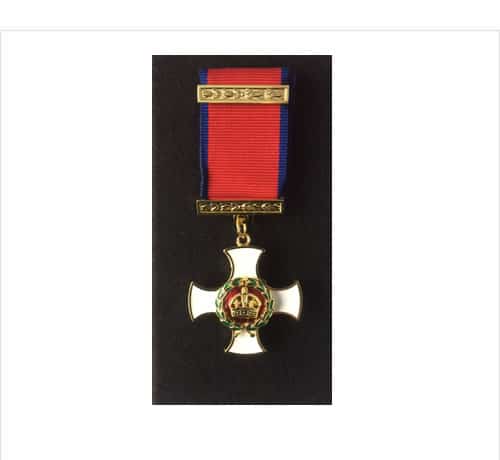Captain Hogg commanded three different columns, and was continuously in the field for four months. On several occasions his force met with severe opposition.
Operation No.5 was conducted under the command of Captain I. G. Hogg, 4th Hussars, with the object of punishing the towns of Osea, Oriri, and Ndoto for attacking the District Commissioner, Mr R.D.N. Raikes, during the previous month, when visiting the Ishan country, on which occasion 32 of the party with Mr Raikes were wounded. The force (7 Officers, 1 British Non-Commissioned Officer, E.J. Moore, Medical Officer, Major Winn Sampson, R.D.N. Raikes, E.F.Pryce (Political Officers), 241 rank and file, 1 7-pr. gun, 2 Maxims) left Asaba on the 24th December, and at Osea encountered stubborn opposition, which was overcome by the 15th January.
Operation No.6 was undertaken with a view to suppressing a rising among the natives of the Asaba Hinterland. Under pressure of a secret society known as the “Ekumeku” or “Silent Ones,” several mission stations had been destroyed and numerous friendly natives murdered. A force (6 Officers, 4 British Non-Commissioned Officers, 215 rank and file, 1 7-pr. gun, 2 Maxims, W.E.B. Copland Crawford, Political Officer, assisted by J. Davidson and W.S. Boyle) left Asaba on the 17th January, commanded by Captain I. G. Hogg, 4th Hussars. Severe fighting took place, Colour-Sergeant W.Mendham being killed in an attack on the town of Ukunzu on the 28th January. On the llth February Captain Hogg’s command was reinforced by 1 Officer, 2 British Non-Commissioned Officers, 90 rank and file, 1 7-pr. gun, under Local Captain H.P. Gordon, 4th Battalion Connaught Rangers. On the 14th and 15th of February a final stand was made by the hostile natives in the town of Okuruku; stubborn resistance was met with, and the enemy was not completely routed until the King’s compound, about a mile distant from the town, had been destroyed. This was effected after some 3 hours’ fighting. By the 25th of April over 300 of the ” Ekumeku” Society had been captured, and have since been tried by the Courts.
Operation No.7 On the 21st March, 1904, Captain I.G.Hogg assumed the command of a force of 9 Officers, 2 British Non-Commissioned Officers, 288 rank and file, 1 7-pr. gun, 2 Maxims, E.J. Moore, Medical Officer, J. Davidson, Political Officer, with instructions to march through the Kwale country, whose inhabitants for the past 5 years had carried on incessant warfare with their neighbours to the detriment of native trading. In July, 1903, the people of a town called Amebu had waylaid, murdered, and mutilated 2 women on their way to Obiaraku. Certain of the chiefs had further been reported to have offered human sacrifices. Fighting took place at Atua, but by the 26th March active opposition had been crushed. The 6 chiefs mainly responsible for the human sacrificing were surrendered. It was subsequently discovered that the sacrifices had been offered to put an end to inter-tribal warfare. The method of sacrifice was peculiarly cruel and brutal. The victims were buried up to their necks in the market places, guns were buried with them, and their spirits directed to shoot anyone recommencing the war; pots were then placed over their heads, and they were left to perish. By the 24th April the chief towns had been visited, no further opposition being encountered, and trade was in full swing when the troops left the district.
W. EGERTON,
High Commissioner,
Southern Nigeria.Captain Hogg commanded three different columns, and was continuously in the field for four months. On several occasions his force met with severe opposition.
His reports are carefully compiled and full of useful information.
The Right Honourable Alfred Lyttelton, K.C., M.P.,
Secretary of State for the Colonies


